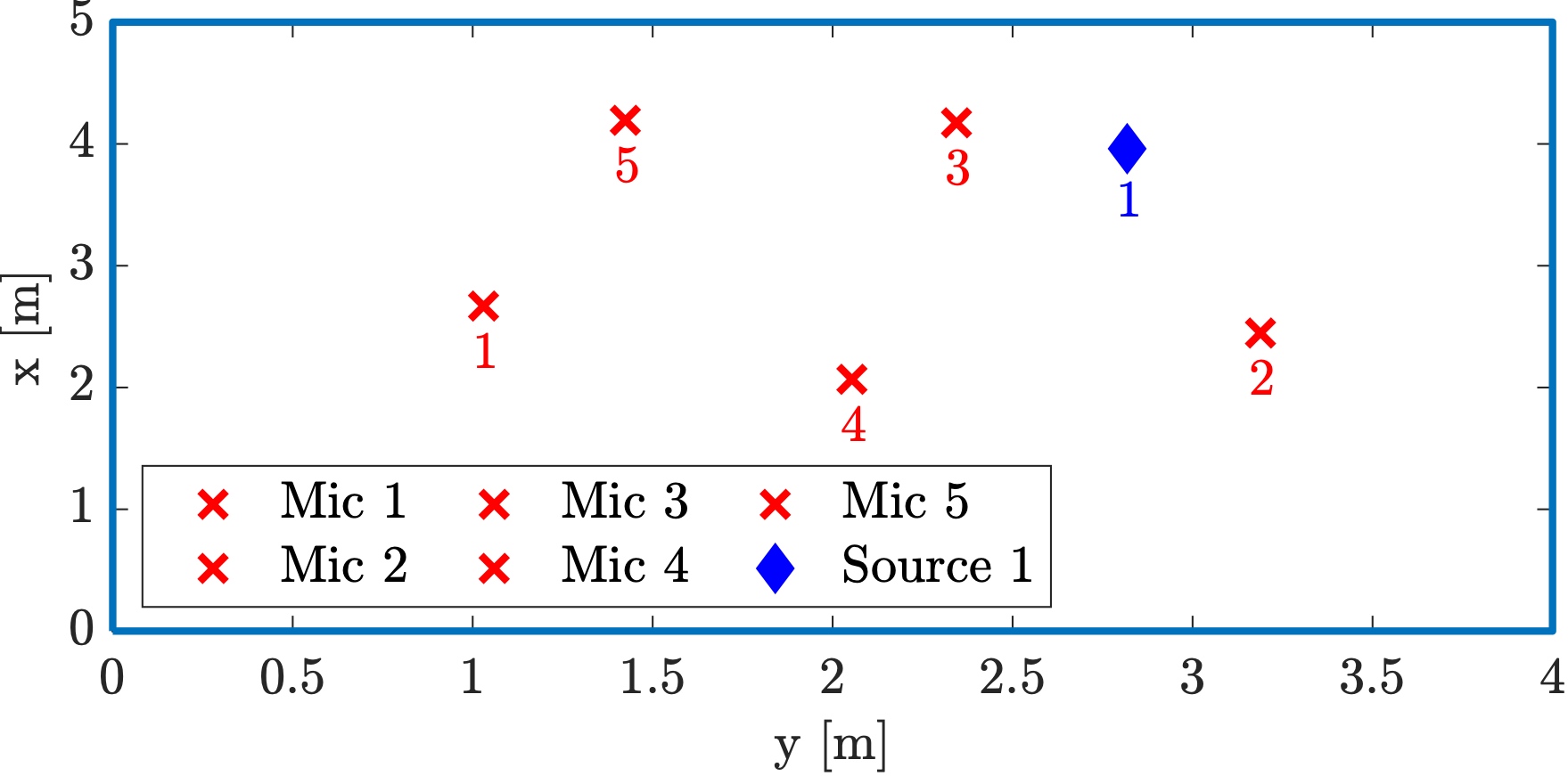PEVD in wireless acoustic sensor networks
Latency-agnostic speech enhancement for wireless acoustic sensor networks using polynomial eigenvalue decomposition
This page provides listening examples for enhancement in wireless acoustic sensor networks (WASNs) using a polynomial eigenvalue decomposiion (PEVD)-based method. The examples are 1 realisation of the setup below, where 5 microphones and 1 speech source are placed randomly in a 4x5x3 m room with T60=0.4 s.

This page was generated using trackswitch.js in [1].
Performance in synchronised networks

Diffuse babble noise at -5 dB SNR.
Performance in asynchronous networks with latency
In this setup latency is applied to the microphones in the network in the range {0...50} ms such that one node always suffers the maximum possible latency (i.e. 50 ms) and the other nodes experience a random latency.

Diffuse babble noise at -5 dB SNR.
References
[1] N. Werner, S. Balke, F-R Stöter, M. Müller, B. Edler “trackswitch.js: A Versatile Web-Based Audio Player for Presenting Scientifc Results.” 3rd Web Audio Conference, London, UK. 2017.






